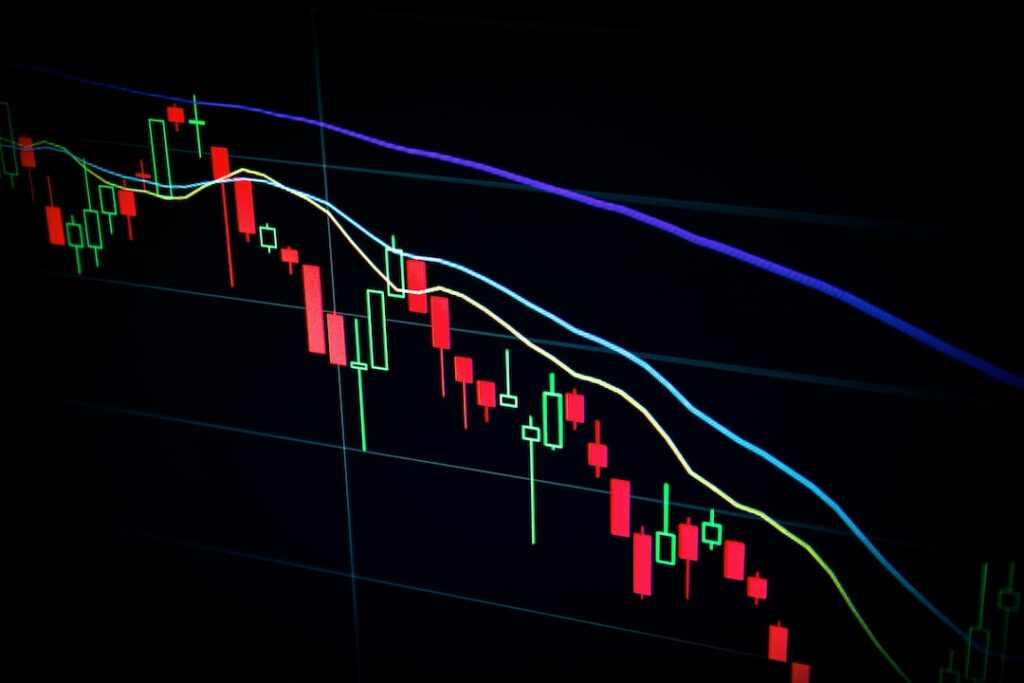Order blocks are special zones on a price chart where big financial players—like banks, hedge funds, and institutions—have previously placed large buy or sell orders.
These zones usually contain clusters of pending orders, and they often influence price direction, market sentiment, and liquidity.
In simple terms, order blocks are areas that show where powerful traders made big moves in the market.
Because of the impact these moves have, retail traders often watch these levels closely and use them to guide their own trading decisions.
Order blocks are commonly used to mark support and resistance levels and help identify ideal spots to enter or exit trades.
What Exactly Is an Order Block?
An order block is a specific price area where a large number of orders—usually limit buy or sell orders—were placed and executed. These areas are often identified after a strong move in price, either up or down. That sharp price movement tells traders that something significant happened at that level—usually heavy buying or selling by big market participants.
By looking at previous price action, traders can spot these order blocks on the chart. Once identified, they become zones of interest because they may cause price to reverse, stall, or break out when revisited.
Why Order Blocks Matter
Order blocks are important because they often act like magnets for price and are frequently revisited. Here’s how they impact the market:
1. They Move the Market
Large buy or sell orders in an order block can shift the market. When heavy buying occurs, prices tend to shoot up. When big sell orders are triggered, prices usually drop.
2. They Affect Liquidity
Because of the sheer size of the orders in these zones, order blocks can absorb much of the market’s buying or selling volume. This can temporarily unbalance supply and demand, leading to sudden price spikes or dips.
3. They Reveal Market Sentiment
Order blocks can show what big players think about the market. If institutional traders are buying at a certain level, other traders often follow, thinking the price will rise. The same goes for selling.
Overall, order blocks help traders understand where major decisions are being made—and that insight can be powerful when trying to predict future price movement.
How to Spot Order Blocks
To identify an order block, traders analyze past price behavior. Here’s what to look for:
- Areas where price reversed sharply
- Zones where price consolidated before a strong breakout
- Points where price tested a level multiple times and reacted
Once these spots are found, traders draw a zone around them on the chart. These zones often act as support if price is above them or resistance if price is below.
Keep in mind: order blocks are more of a zone than a precise price level. Price might slightly pass through it before reacting.
Another important point is that the more times price revisits an order block, the weaker it becomes. Eventually, if price breaks through it, the role of the zone often flips—support turns into resistance or vice versa.
How to Trade Using Order Blocks
If you’re using order blocks in your trading strategy, here’s a full guide to help you trade them effectively:
1. Identify Order Blocks
Start by studying historical price movements. Find areas where price strongly moved or changed direction—these are your potential order blocks. Draw a rectangular zone around those levels.
2. Watch Price Behavior Near the Block
When price returns to that zone, observe how it behaves. If price bounces off the zone multiple times, it’s showing strength. But always remember, it’s a range—not an exact number.
3. Plan Your Entry
There are two main ways to enter trades using order blocks:
- Reversal Entry: If price comes into an order block and shows signs of reversing (like a hammer, shooting star, or engulfing candle), you can enter a trade in the opposite direction.
- Breakout and Retest Entry: If price breaks through the order block zone, wait for it to come back and retest that level. If it now holds as support or resistance, look for a confirmation before entering in the direction of the breakout.
4. Look for Confluence
For a stronger setup, combine order blocks with other tools—trendlines, moving averages, Fibonacci retracements, or chart patterns. When multiple signals line up, your trade setup becomes more reliable.
5. Set Your Stop Loss and Target
Always protect your trades. Place your stop loss a little beyond the order block zone to give your trade some breathing room.
For take-profit targets, use nearby support/resistance zones or a favorable risk-reward ratio that fits your strategy.
6. Practice Good Risk Management
Even though order blocks are powerful, they’re not foolproof. Always manage your risk properly. Avoid risking too much on a single trade, and use position sizing that matches your account size and risk tolerance.
7. Monitor Your Trade
Once you’re in a trade, keep an eye on how the market moves. Be ready to adjust your stop loss or take profit levels if market conditions change. Stay disciplined and stick to your trading plan.
Final Thoughts
Trading with order blocks is a smart approach that gives insight into what the big players are doing. But remember—it’s not a guaranteed way to win trades.
Like any other trading method, order blocks work best when you backtest them, understand their behavior, and use them with discipline.
Before using this strategy with real money, practice on a demo account. Learn how to spot strong order blocks, confirm your trades, and manage your risk properly.
With time and experience, you can make order blocks a powerful tool in your trading arsenal.
Join Our Political Forum official 2025 WhatsApp Channel To Stay Updated On time https://whatsapp.com/channel/0029VaWT5gSGufImU8R0DO30


